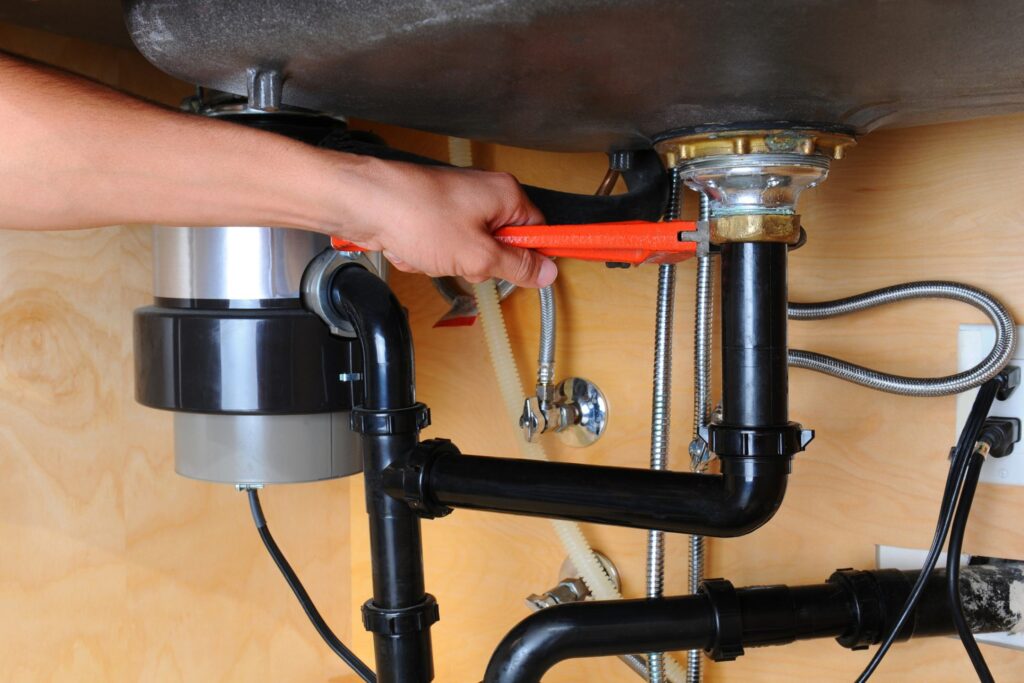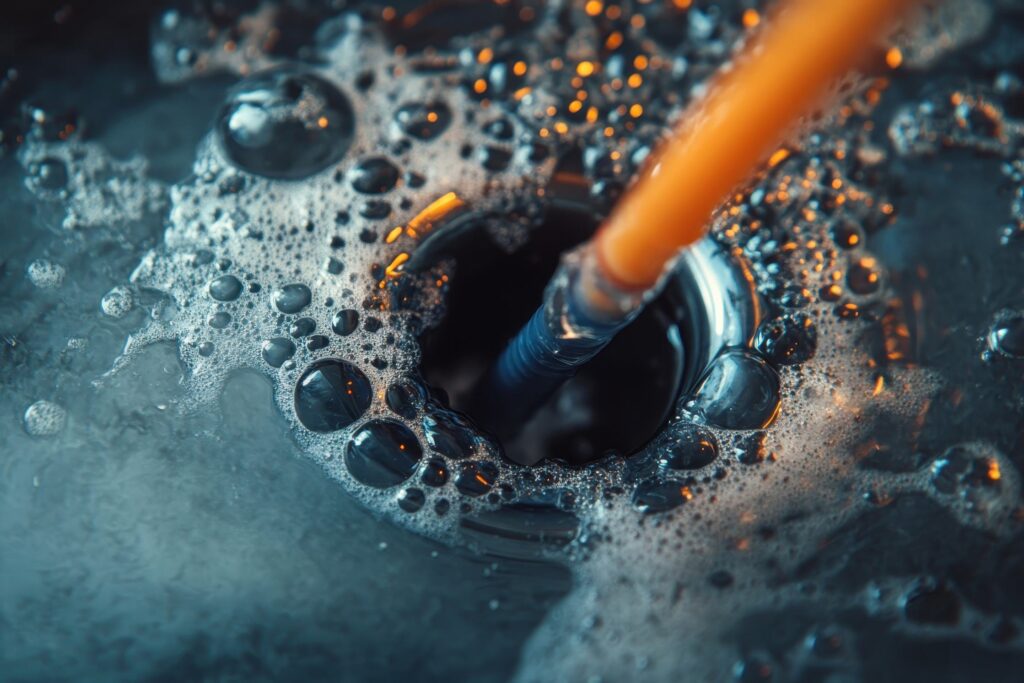Finding your kitchen sink backed up in the middle of cooking or cleanup can be frustrating. A clogged kitchen sink is a frequent household problem, often caused by accumulated food waste, grease, or other debris. Before you consider hiring a professional, why not try a few do-it-yourself strategies that might save you time and money?
Understanding Why Kitchen Sinks Get Clogged
Clogs in your kitchen sink typically occur due to the accumulation of food scraps, grease, soap residue, or items like coffee grounds that don’t dissolve. Over time, these can build up in your pipes, causing a blockage.

Steps to Unclog Your Kitchen Sink
Here’s a detailed guide to help you tackle a kitchen sink clog on your own:
- Boiling Water: For quick relief, boiling water might do the trick. Heat a kettle or pot of water until it boils and pour it slowly and steadily into the sink’s drain. Let it sit for a few minutes to dissolve soap scum or grease binding the clog.
- Baking Soda and Vinegar: This natural and effective method can clear out clogs without harsh chemicals. Start by removing any standing water from the sink, then pour a cup of baking soda down the drain, followed by an equal amount of vinegar. Allow the mixture to foam and react for about 15 minutes, then flush with boiling water to remove loosened debris.
- Use a Plunger: A plunger can help dislodge more stubborn clogs. Fill the sink with enough water to cover the plunger’s base, then firmly seal the plunger over the drain. Pump the plunger up and down vigorously a few times. Repeat the process until the water starts draining.
- Clean the P-Trap: If the previous methods don’t work, you may need to clean out the P-trap, the curved pipe beneath the sink. Place a bucket underneath to catch water or debris. Using a wrench, loosen the nuts on each end of the trap, remove it, and clean out any clogs. Reassemble the P-trap and test the drain.

- Utilize a Drain Snake: For persistent clogs, a drain snake may be required. Insert the snake into the drain and twist the handle to push it deeper into the pipe. When you encounter resistance, keep turning to break up the clog. Extract the snake and flush the drain with hot water.
- Check the Garbage Disposal: Next up on your checklist: check the garbage disposal—this could be the source behind your kitchen woes. First, go ahead and turn the unit on to see if it helps clear the clog. Then, if the disposal doesn’t run, look underneath the unit and press the small red reset button. That quick fix often does the trick and gets things moving again. Click here for more in-depth instructions on how to clean your garbage disposal.
Tips to Prevent Future Kitchen Sink Clogs
After clearing your current issue, follow these tips to avoid future clogs:
– Don’t pour grease or oil down the drain.
– Use a sink strainer to trap food particles.
– Run hot water through the sink after use to keep pipes clear.
– Regularly clean your sink and use the baking soda and vinegar method for maintenance.

Kitchen sink clogs are a nuisance, but they can often be resolved with the right plumber-approved solutions and a bit of patience. The above methods address various blockage types, from minor to more stubborn ones. However, if these techniques don’t resolve the problem, it might be time to contact a professional. Here’s a list of our professional kitchen plumbing services!
At Beavercreek Plumbing & Drain, we offer excellent advice and services for all your plumbing needs. Whether it’s a small kitchen sink clog or a more complex plumbing issue, our professional team is ready to provide efficient and cost-effective solutions.
A well-maintained kitchen sink is key to preventing future plumbing problems. Next time you’re faced with a pesky clog, you’ll know exactly how to handle it!
Call Beavercreek Plumbing & Drain today at (937) 404-6575, or schedule an appointment online now by clicking here!




